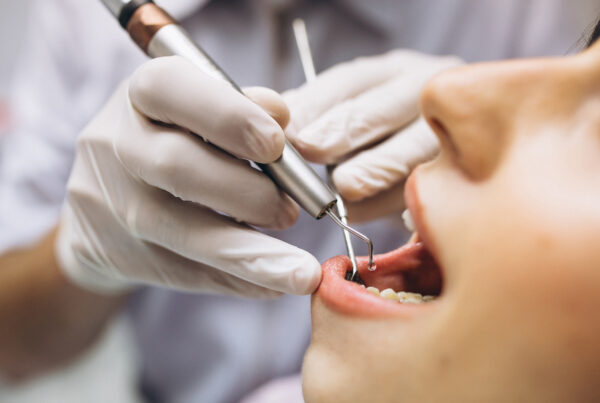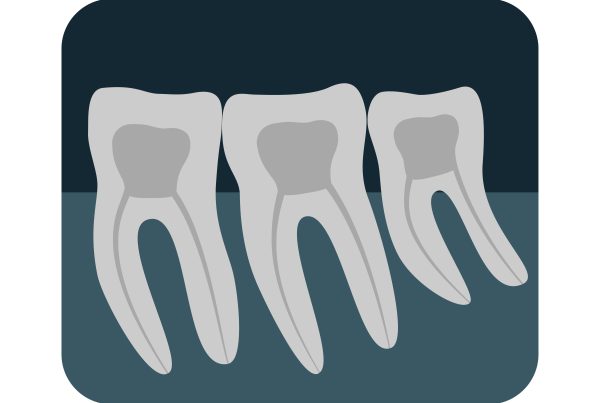An Overview On Horizontal Wisdom Teeth
The emergence of wisdom teeth, the third set of molars at the back of the mouth, has long been a source of discomfort and curiosity for individuals around the world. One of the most common predicaments associated with wisdom teeth is their tendency to grow sideways, a phenomenon that often leads to complications such as pain, infections, and dental misalignment. While the evolutionary roots of this peculiar growth pattern remain a subject of debate, current research suggests that changes in human jaw size and dietary habits over the course of evolution have left little room for these late-developing molars, leading to their irregular and often problematic growth. Understanding the factors contributing to the sideways growth of wisdom teeth is crucial not only for addressing the associated dental issues but also for gaining insights into the intricate evolutionary processes that have shaped the human oral structure over millennia.

What factors contribute to the sideways growth of wisdom teeth?
Several factors contribute to the sideways growth of wisdom teeth, a common occurrence that often leads to various dental complications. One of the primary reasons is the evolutionary reduction in jaw size among humans, which results in insufficient space for the proper eruption of these late-developing molars. Additionally, changes in dietary habits, especially the shift towards softer, processed foods over generations, have led to decreased jaw strength and size, further exacerbating the lack of space for the wisdom teeth to grow normally. Genetic factors may also play a role, as some individuals are predisposed to smaller jaw sizes, making it challenging for the wisdom teeth to find adequate room for their emergence. Consequently, the limited space prompts these teeth to adopt irregular growth patterns, including sideways or horizontal growth, leading to impaction, crowding, and potential pain or infection.
How does the sideways growth of wisdom teeth impact dental health and oral hygiene?
The sideways growth of wisdom teeth can significantly impact dental health and oral hygiene in various ways. Firstly, this irregular growth pattern often leads to impaction, where the teeth become trapped beneath the gum line or against neighboring teeth, causing immense pain, inflammation, and potential infection. The pressure exerted by sideways-growing wisdom teeth can also lead to misalignment of the surrounding teeth, causing crowding and disrupting the overall dental arch. This misalignment not only affects the aesthetic appearance of the smile but also makes proper dental care more challenging, as the crowded teeth can be difficult to clean effectively, leading to a higher risk of tooth decay, gum disease, and other oral health issues. Moreover, the inflammation and infection resulting from impacted wisdom teeth can spread to adjacent areas, potentially causing more significant health complications if left untreated. As a result, the sideways growth of wisdom teeth poses a substantial threat to overall dental health and underscores the importance of timely intervention and treatment.


Are there any evolutionary explanations for the sideways growth of wisdom teeth?
The sideways growth of wisdom teeth has been a subject of interest in the context of human evolution, with researchers proposing several theories to explain this phenomenon. One prevalent explanation is based on the evolutionary changes in human diet and jaw structure over time. As early humans transitioned from consuming rough, unprocessed foods to softer diets, the need for large, powerful jaws decreased. Consequently, the human jaw gradually evolved to become smaller, making it increasingly challenging for the third molars, or wisdom teeth, to emerge properly. This mismatch between jaw size and the size of the teeth may have contributed to the frequent occurrence of sideways growth or impaction of wisdom teeth in contemporary humans. Furthermore, some scientists suggest that the continued evolution of the human jaw may eventually lead to the disappearance of wisdom teeth altogether, as they serve a diminished function in the context of modern dietary habits and oral hygiene practices.
What are the common symptoms and complications associated with impacted or sideways-growing wisdom teeth?
Impacted or sideways-growing wisdom teeth can lead to a range of symptoms and complications, causing significant discomfort and potential oral health risks. Common symptoms include persistent pain or tenderness in the back of the mouth, swelling and redness of the gums, difficulty opening the mouth, and a persistent unpleasant taste or odor. Complications can include the formation of cysts around the impacted tooth, which can lead to damage to the surrounding bone and teeth. Infection may also develop, causing swelling, pain, and even illness if left untreated. Additionally, the pressure exerted by impacted or sideways-growing wisdom teeth can result in the misalignment of other teeth, leading to crowding and potential bite problems. Over time, these complications can contribute to the deterioration of overall dental health, emphasizing the importance of timely intervention and treatment by dental professionals.


How do dental professionals diagnose and treat sideways-growing wisdom teeth?
Dental professionals employ various methods to diagnose and treat sideways-growing wisdom teeth, aiming to alleviate discomfort and prevent further complications. Diagnosis typically involves a combination of physical examination, dental imaging such as X-rays or CT scans, and evaluation of symptoms. Once a sideways-growing wisdom tooth is identified, treatment options may include the surgical extraction of the impacted tooth. This procedure is often performed by oral surgeons or experienced dentists in a controlled clinical setting. Depending on the severity of the case and the position of the impacted tooth, the extraction may involve simple surgical procedures or more complex surgical techniques such as sectioning the tooth for easier removal. Post-operative care instructions, including pain management and oral hygiene recommendations, are usually provided to ensure proper healing and to minimize the risk of complications. Regular follow-up visits are often scheduled to monitor the healing process and address any concerns that may arise.
What are the potential risks of leaving sideways-growing wisdom teeth untreated?
Leaving sideways-growing wisdom teeth untreated can pose various risks and potentially lead to significant oral health complications. One of the primary risks is the development of infections, which can spread to the surrounding gums and even the jawbone, causing severe pain, swelling, and discomfort. In some cases, untreated infections can lead to more systemic health issues if the bacteria enter the bloodstream. The continued pressure exerted by the impacted or sideways-growing wisdom teeth can also result in the misalignment of adjacent teeth, leading to overcrowding, bite problems, and potential issues with chewing and speaking. Furthermore, the presence of impacted wisdom teeth can contribute to the development of cysts or tumors, which may cause damage to the surrounding bone and tissues. Over time, the persistence of these untreated complications can significantly compromise overall oral health and well-being, underscoring the importance of timely intervention and treatment by dental professionals.




